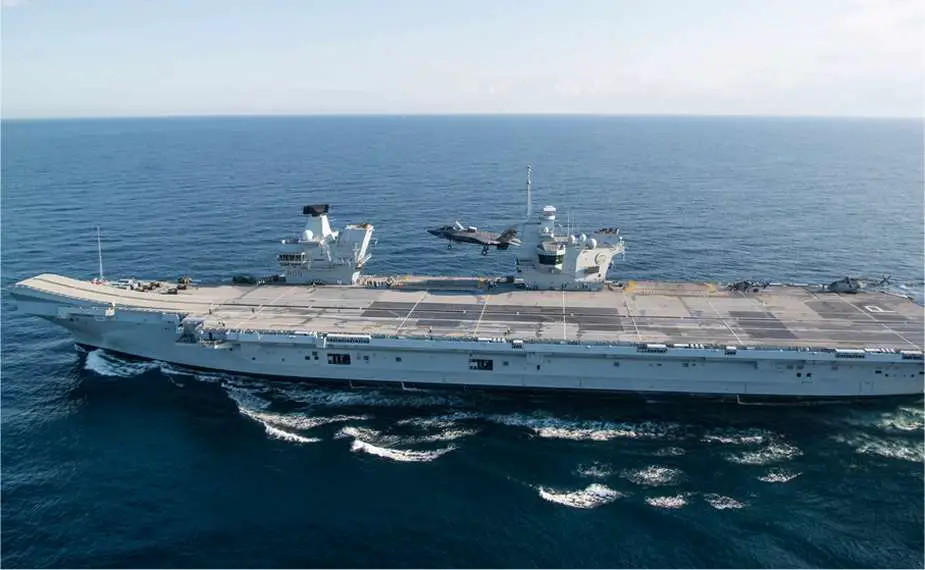Breaking news
US Marines' F-35B conducts landing tests on Royal Navy's aircraft carrier HMS Prince of Wales.
According to information published by the US DoD on October 12, 2023, an F-35B, piloted by a USMC Test pilot, from Air Test and Evaluation Squadron 23 (VX-23), successfully landed on the HMS Prince of Wales, a member of the U.K. Queen Elizabeth-class aircraft carriers. This event was a component of the First of Class sea trials for the F-35B test (DT-3).
Follow Navy Recognition on Google News at this link
 F-35B and Queen Elizabeth class aircraft carrier HMS Prince of Wales. (Picture source: Dvids)
F-35B and Queen Elizabeth class aircraft carrier HMS Prince of Wales. (Picture source: Dvids)
The HMS Prince of Wales is participating in the WESTLANT 23 operations, which involve a series of naval aircraft trials in the Western Atlantic throughout autumn 2023. These trials aim to evaluate and understand the capabilities of naval aviation operations, including those of the F-35s.
The U.K. is a Tier I partner in the F-35 Joint Strike Fighter (JSF) Program. This ongoing deployment is an opportunity for collaboration between the U.K. and U.S., aiming to enhance coordination between the U.S. Navy and Royal Navy.
The F-35 Joint Program Office, managed by the U.S. Department of Defense, oversees the 5th-generation strike aircraft initiative for multiple military branches and international allies. The F-35, with its advanced technology and sensors, has been operational since July 2015.
F-35B
This multi-role machine is designed to handle a variety of operations, from air-to-surface tasks to electronic warfare and intelligence collection. Its stealth capabilities, combined with advanced sensors and mission systems, allow it to operate in hostile territories without being easily detected. The aircraft's integrated sensors enhance the pilot's situational awareness, and the data it collects can be securely shared with other platforms.
A feature of the Lightning is its ability to take off from short runways and land vertically. This flexibility means it can operate from various platforms, including the new Queen Elizabeth-class aircraft carriers and other allied vessels.
The aircraft is powered by a Pratt & Whitney F135 turbofan and is designed to reach speeds up to Mach 1.6. It can operate at altitudes up to 50,000 feet and has a range that allows it to cover significant distances on internal fuel. The aircraft is equipped to carry a combination of missiles and bombs.


























